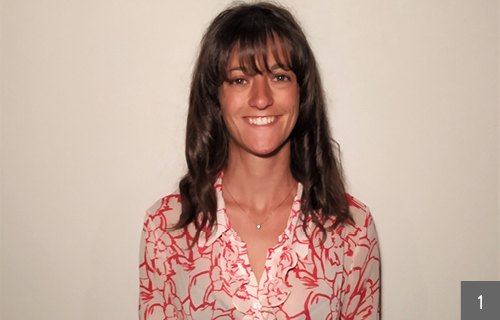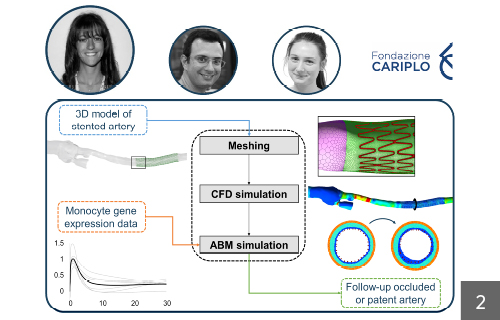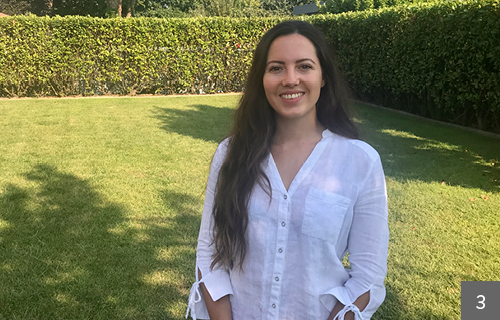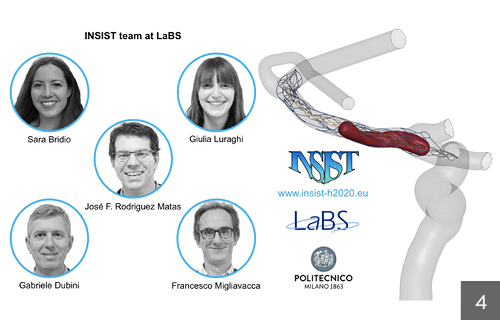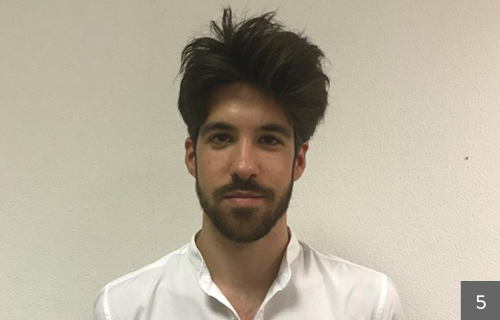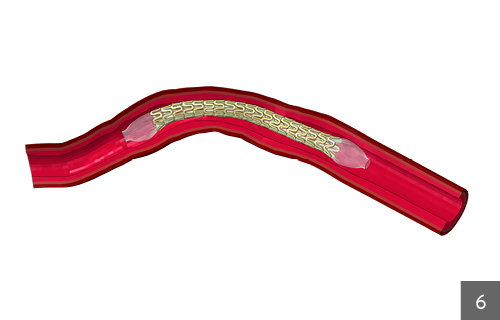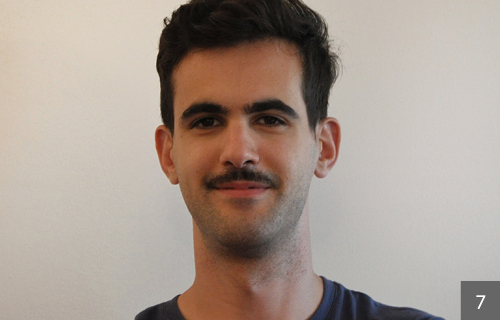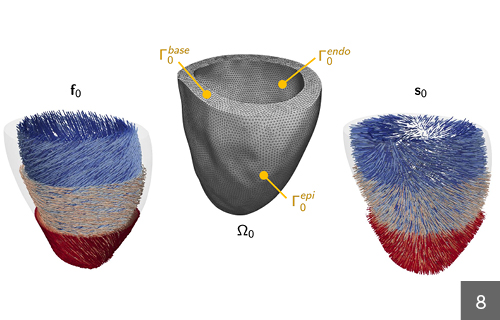18.09.2020 12:00
VPHi awards for 4 young researchers at the Politecnico
Research fellows and PhD students working on projects in the field of systems biomedicine
This is an outstanding result for four young researchers from the Politecnico di Milano at the VPH2020 conference, where they were awarded with important recognitions for their studies.
The event, organized by the VPH Institute in Paris, is dedicated to research on the Virtual Physiological Human, and systems biomedicine in general, as well as applications in clinical contexts to support the move towards personalized predictive medicine.
Let’s meet the four researchers together.
Anna Corti – Best VPHi student award
The award is given to the most outstanding work submitted by VPHi student members to the VPH Conference, by an ad hoc committee.
The work presented by Anna Corti is part of the project “TIME - From TIssue to Molecular mechanisms of restenosis after peripheral Endovascular interventions”, supported by Fondazione Cariplo and coordinated by Dr. Claudio Chiastra. LaBS's team is completed by Monika Colombo, with the collaboration of Francesco Migliavacca, Jose F. Rodriguez Matas and Giancarlo Pennati, and the participation of the University of Florida, the Houston Methodist Hospital (USA) and the Politecnico di Torino.
The aim of the project is to study the mechanisms of in-stent restenosis in human femoral arteries following endovascular procedures. In-stent restenosis consists in the partial or total occlusion of the artery following the implantation of a stent, which is a device composed by a wire mesh and implanted in the artery to keep the vessel open.
Specifically, in this work Anna developed a patient-specific model based on different computational methods (CFD simulations and agent-based model) that allows to investigate the effects of local hemodynamics and systemic inflammation on the intervention outcome.
This study is an example of how mathematical models and computational simulations are powerful tools that, by offering a virtual environment to test clinical hypothesis, can provide deeper insights into the complex processes governing in-stent restenosis and drive the development of more effective therapies to improve the surgical outcome. An important innovation of our study regards the interaction of patient-specific gene expression data with a model replicating cellular dynamics, which lays the foundation towards the development of an approach within the emerging personalized and predictive medicine.
I decided to start a PhD at Politecnico di Milano after carrying out my master thesis in Houston (USA), focusing on a project linked to TIME. Working at this project, together with supervisors and researchers who motivated me and with whom I still work, allowed me to get close to the world of research and computational modeling in the vascular field and convinced me to deepen this study with a PhD at LaBS
Sara Bridio – Student Poster Award
The award is given by the VPH2020 Scientific Committee to the best posters made by students.
The poster presented by Sara Bridio is entitled “Intra-arterial thrombectomy: a numerical workflow for patient-specific computational simulations”, and is part of the H2020 project INSIST (IN Silico clinical trials for acute Ischemic Stroke).
The goal of INSIST project is to realize in silico clinical trials, i.e. “virtual” trials, to test the safety and efficacy of procedures and devices used to treat acute ischemic stroke. This pathology happens when a blood clot (thrombus) obstructs a cerebral artery, preventing blood perfusion of the brain tissues downstream. The most effective treatment, recently introduced, is intra-arterial thrombectomy: a minimally-invasive procedure consisting in reaching the occlusion site with a stent-retriever, which entraps the thrombus, retrieves it out of the occluded artery and restores the perfusion of cerebral tissues.
To launch on the market new devices or to introduce new procedures in the clinical practice, long and expensive clinical trials are needed. The creation of in silico clinical trials allows to support or substitute clinical trials on real patients, thus reducing time, costs and adverse effects on patients. The INSIST project aims at creating a registry of virtual patients and at creating computational models of the treatments for acute ischemic stroke and of the patients’ response to them.
The specific aim of Sara's research team at LaBS is the creation of computational simulations of the thrombectomy procedure. In particular, in the work presented at VPH2020, she described the workflow implemented to create patient-specific computational models of thrombectomy.
In the team, Professors Francesco Migliavacca, José F. Rodriguez Matas, Gabriele Dubini and Dr. Giulia Luraghi.
The decision to start a PhD was consolidated during my first research experience, when I spent six months in Atlanta (USA), to work on my master thesis project as a collaboration between Emory University and LaBS. During that period, I deepened my interest in the application of computational models to the study and the treatment of vascular pathologies, which I have now the opportunity to investigate working at INSIST
Luca Antonini – Student Poster Award
The poster presented by Luca Antonini is entitled: "Stent Deployment within Patient-Specific Coronary Artery: Numerical Comparison between DES and BVS".
The theme is the realization of patient-specific simulations of coronary stent implantation, that is the numerical analysis of the performance of these medical devices when used to treat virtual arteries reconstructed on the basis of clinical images obtained from real patients.
This work is part of a much wider context such as the European H2020 project InSilc, a three-year project that deals with the development of a virtual platform (in-silico) aimed at the development, design and assessment of coronary stents by simulating their implantation in a population of virtual patients.
Luca is a PhD student at LaBS – Laboratory of Biological Structure Mechanics, and works in InSilc project under the supervision of Professors Giancarlo Pennati e Lorenza Petrini.
During the first year of work I became passionate about finite element simulations, development of digital models and the many challenges that the world of research in university presents to you. The decision to apply for a PhD career was, therefore, a natural consequence and today I have the opportunity to continue this path through the realization of my PhD project
Francesco Regazzoni - Young Investigator Presentation Award
The award is given by the VPH2020 Scientific Committee to the best Young Investigator Presentations
Francesco Regazzoni is a research fellow at the MOX – Modellistica e Calcolo Scientifico (Modelling and Scientific Computing) lab, where he works on the H2020 iHEART project under the guidance of professor Alfio Quarteroni.
The goal of this European project is to construct a virtual heart made of mathematical equations that describe the complex interaction of physical phenomena underlying the heartbeat.
During his PhD, Francesco developed a mathematical model that explains how heart tissue generates an active force and is therefore able to contract. With the tools of stochastic calculus, he was able to represent the complex interactions among the proteins that compose the cardiomyocytes — cardiac muscle cells — in a very compact mathematical structure. The main innovation of this model is that, for the first time ever, it enables the contraction of a cardiac cell to be simulated in a few seconds of computation (on a normal laptop) without foregoing a detailed description of the physical processes. This presents new possibilities in the study of pathologies originating in changes in the contraction mechanism, such as hypertrophic cardiomyopathy, a serious pathology that affects one out of every 500 people.
In his thesis, he combined his model of cellular contraction with pre-existing models of electrophysiology and cardiac mechanics. He therefore obtained a multi-scale model that allows the beat of the entire heart or one of the chambers to be simulated. Given the high computational cost of these simulations, he developed a new artificial intelligence technique, Machine Learning in particular, to build an emulator of the cellular model starting with a collection of previous simulations. The emulator, which is much quicker than the original model, allows the computational cost of the simulations to be reduced considerably.
We are only at the beginning. A natural extension of the work done thus far is to customize the virtual heart based on data from a specific patient. A ‘digital twin’ of the patient would be built, a virtual replica of an individual’s heart, starting with his or her biometric data and diagnostic exams. In the future, one could imagine giving this twin heart to the heart surgeon or cardiologist to evaluate different therapies or strategies of intervention before acting on the actual patient, optimizing and personalizing care based on each patient’s particular characteristics


